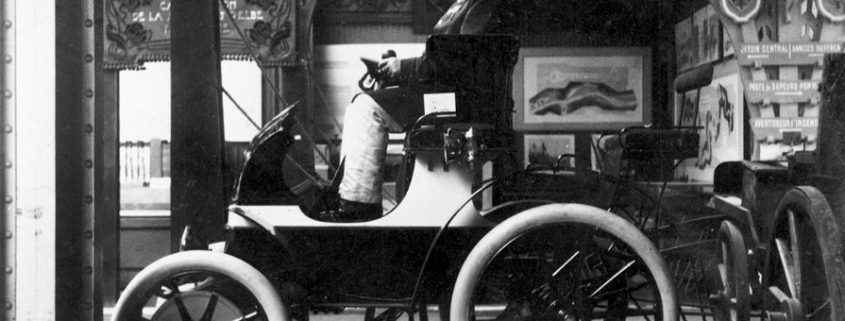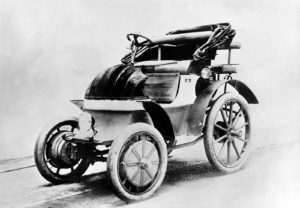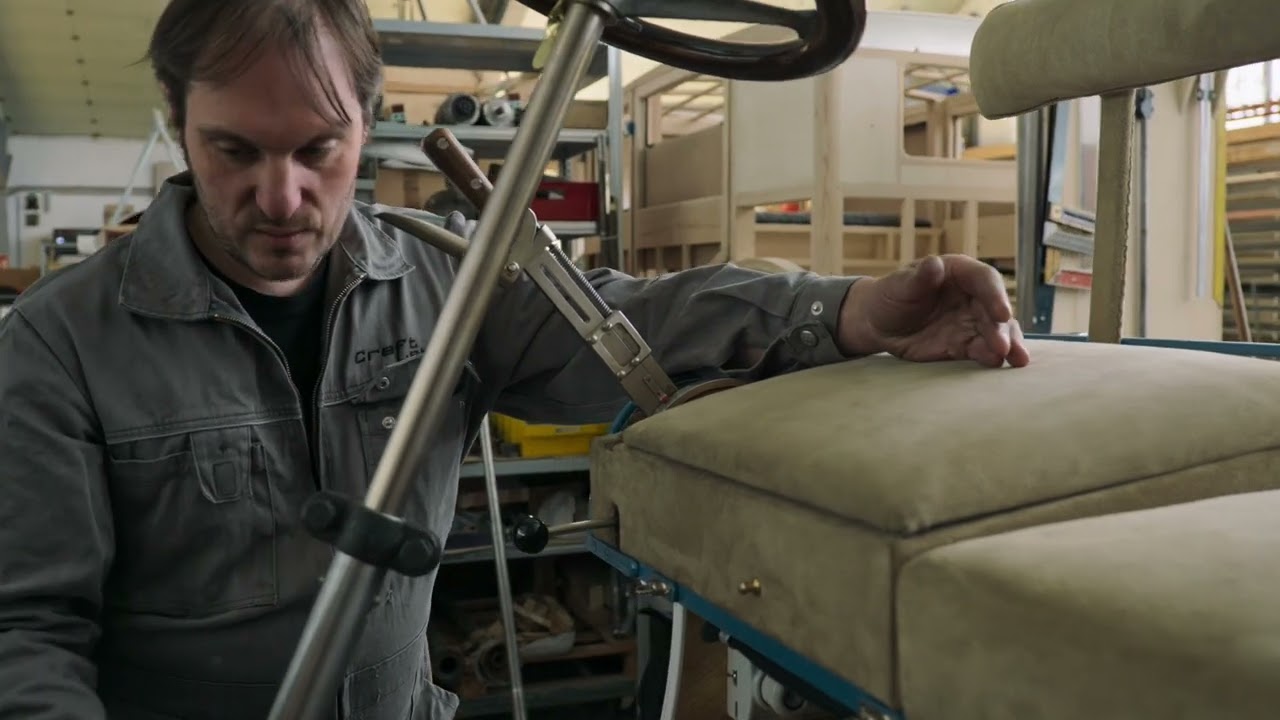The first Porsche was electric – the 1900 Lohner Porsche
Ferdinand Porsche was not only a brilliant design engineer but also, first and foremost, a pioneer with foresight. He built his first zero emission vehicle for his boss at the time, Bela Egger of the electrical engineering company VEAG, already in 1896 – an electrically powered carriage assigned by Ludwig Lohner. The vehicle was named Egger-Lohner and Porsche played a considerable role in its development.
As all petrol engine manufacturers in Europe were either unable or reluctant to supply, Ludwig Lohner of the company k.u.k. Hof-Wagen-Fabrik Jacob Lohner decided to take his own path in 1898 with the construction of electric vehicles. There was also a decline in carriage building at the end of the 19th century and the young engineer recognised that the future belonged to motor vehicles. A further reason for the development of electric drives and particularly topical today, was the air and noise pollution caused by loud combustion engines.
Elektromobile „System Lohner Porsche”
In 1899 Ferdinand Porsche left VEAG to join k.u.k. Hof-Wagen-Fabrik Jacob Lohner where he developed the electromobile “System Lohner-Porsche”. The electric vehicle was first presented at the Paris World Exposition in 1900. The automobile world looked on in amazement!
The Lohner Porsche was constructed in a very similar way to the carriage by Lohner with typically large rear wheels and wooden spokes. It had a vehicle body out of wood with a large top out of black varnished leather to protect drivers from the rain and was powered by two wheel hub motors in the front wheels. These electric wheel hub motors already went into production in Lohner’s workshops in the Donaufelderstraße in Vienna, in 1990, when the world exhibition in Paris opened.
The internal pole electric engines built into the hubs had an output of 2.5 hp each. The wheel hub motor in the front wheels was the first patent registered on the Porsche & Lohner name. The vehicle reached a maximum speed of up to 40 km/hr.
Due to the heavy weight of the 42-cell lead accumulators as well as the wheel hub motors the electric drive found it hard to assert itself on the automobile market. Furthermore, the maintenance as well as the charging of the batteries was difficult, and the vehicles were expensive with sales slow to take off. In 1900, Lohner only sold five electric cars and eleven in the following year.
Replica of the Lohner Porsche 1899
The Replica of the Lohne-Porsche 1899 is on display in the entrance area of the oldtimer exhibition at fahr(T)raum Mattsee near Salzburg. The Lohner Porsche 1899 is also available as model car on a scale of 1:18 and 1:43 in the fahr(T)raum oldtimer museum and online shop.
Blog post: The world´s first four-wheel drive car was a Porsche
Blog post: Lohner-Porsche Mixte 1901
Sources
Ludvigsen, Karl (2010): Ferdinand Porsche – Genesis eines Genies
Porsche Museum präsentiert historisches Hybridautomobil aus dem Jahr 1900
Die Geschichte von Porsche beginnt elektrisch
Der Erfinder des elektrischen Radnabenmotors
Bildnachweis
Porsche AG
Fahrtraum GmbH
This might also interest you:









The „Original Beetle” at fahr(T)raum Mattsee – a KdF car from the year 1942
/Kategória: Geschichte, Uncategorized @hu, VW KäferFerdinand Porsche laid the cornerstone for the success story of a car that has been known throughout the world for more than half a century. On behalf of RDA (Reichsverband der Automobilindustrie [imperial association of the automotive industry]), he developed the first, long anticipated car for the people of Germany, the Volkswagen. Back then still […]
Austro Daimler Alpenwagen Year of manufacture 1911 now at fahr(T)raum
/Kategória: Geschichte, Rennautos, Uncategorized @huThe last surviving AD 9/27 Alpenwagen stands in Mattsee The Ferdinand Porsche Erlebniswelten fahr(T)raum Mattsee/Salzburg is currently displaying an AD 9/27 HP Alpenwagen. This sports car – a successful further development of the AD 20 HP – is the only surviving car of this type; one other was destroyed in a fire. In the autumn […]
Ferdinand Porsche at Daimler (Mercedes)-Benz
/Kategória: Geschichte, Lebensstationen, Rennautos, Uncategorized @hu1926 Mercedes 24/100/140 PS on display in fahr(T)raum Ferdinand Porsche left Austro Daimler in 1923 due to differences with the Supervisory Board. As of April 30, 1923, he succeeded Paul Daimler on the Board of Management and as Chief Designer at the Daimler-Motoren-Gesellschaft (DMG) in Stuttgart. At Daimler he was in charge of the further […]